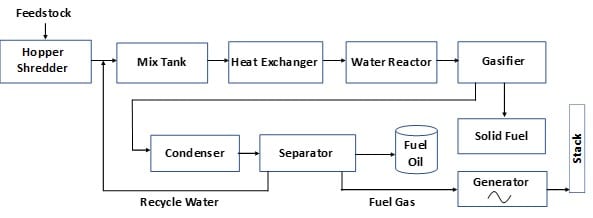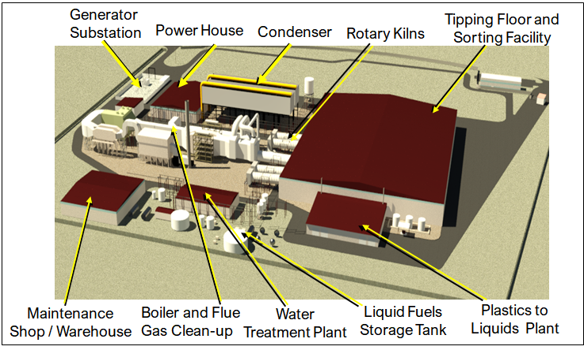Plastics to Fuels
Plastics to Fuel (PtF) technology can safely and reliably convert waste plastics into low-sulfur liquid fuels. Thermal conversion can be carried out in an inert nitrogen atmosphere (pyrolysis), or in superheated water at high pressure (hydrothermal liquefaction). In both processes the plastic polymers are heated, breaking them down into smaller hydrocarbons. Catalysts can be used to advantage in either process. Both approaches produce a fuel gas made up of small molecules such as methane and ethane, an oil that is mainly in the diesel fuel distillation range, and a solid carbon char or coke.
The product oil can be distilled to produce diesel, naphtha, and other fractions, similar to light crude oil. The pyrolysis gas is cleanly burned to heat the pyrolysis chamber with excess available for power generation. The solid char can be sold.
Several PtF different processes are in operation. The EPR hydrothermal liquifaction (HTL) process makes a synthetic diesel by selectively cracking mixed waste plastic polymers. The process is clean has a 60-70% liquid fuel yield, depending on the mix of polymers in the feedstock.

On average, plastics have two to three times the calorific value of biomass, which makes them worth separating and processing separately from biomass.
Converting plastics to fuel represents the best use of the energy stored in waste plastics while keeping these material out of the environment
An integrated WtE/PtL facility shares a tipping floor and sorting facility, is self sufficient in energy, and can be sized to best accommodate the proportion of plastics (fossil carbon) to biomass (contemporary carbon) fuels in the waste stream.

